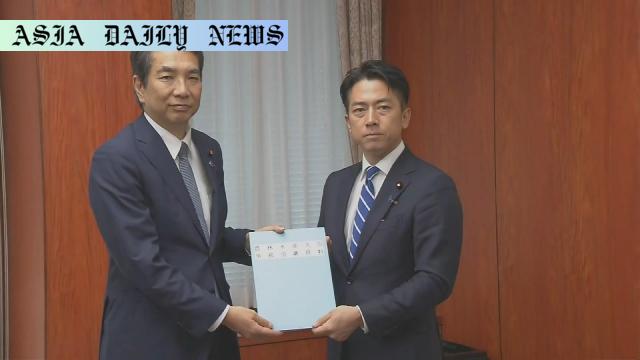Rice prices are the focus as Japan’s new agriculture minister, Koizumi Shinjiro, takes charge and pledges innovative measures.
- Koizumi Shinjiro is Japan’s new agriculture minister, tackling rising rice prices.
- Plans include stopping auctions and promoting direct buyer contracts.
- Government stocks of rice will be released without limits for price stability.
- New measures aim to provide swift and impactful results.

Introduction: Tackling Japan’s Rice Crisis
Japan’s agriculture sector is facing a significant challenge with surging rice prices, a staple food for the nation. The newly appointed agriculture minister, Koizumi Shinjiro, is taking the reins during this crisis. With a strong focus on combating escalating costs, his swift actions reflect an understanding of farmers’ needs, consumer expectations, and market dynamics. As Koizumi pledges reforms, all eyes are on how effectively these objectives will stabilize rice markets and benefit stakeholders.
The Immediate Problem: Rising Costs and Public Concerns
Rice remains central to Japanese diets, culture, and economy, so the increasing prices have raised alarm nationwide. Market analysts attribute the sharp spike to a combination of decreasing production capacity, supply chain issues, and inflationary pressures. Japan’s government has maintained stockpiles for emergencies, but the pressing concern now is the accessibility of affordable rice for general consumers. Koizumi’s strategy involves the release of government reserves, demonstrating a priority to curb inflationary fears among citizens.
Policy Shift: Scrapping Auctions for Direct Contracts
In a move that signals a strategic departure, Koizumi has announced a halt to the planned fourth auction of rice stocks. The previous administration relied significantly on such auctions to adjust the supply-demand balance. However, Koizumi emphasizes adopting direct contracts with buyers instead. This measure not only reduces middlemen but aims to foster fairness and transparency, ensuring that end consumers benefit directly from governmental interventions without unintended price increases along the chain.
Leadership Dynamics: Transition from Eto to Koizumi
Koizumi’s appointment comes in the aftermath of Eto Taku’s controversial tenure. Eto faced public scrutiny over remarks perceived as dismissive of the rice crisis, further eroding trust in the Ministry of Agriculture. As Koizumi begins his term with decisive actions, he embodies a fresh approach to leadership, balancing strategic reforms with urgent short-term measures. His commitment to quick results reassures citizens and stakeholders alike, showcasing accountability and a proactive mindset.
Challenges Ahead: Measuring Success
Despite the strong start, Koizumi faces significant challenges. The effectiveness of his proposed mechanisms, including the unlimited release of rice reserves, depends on several factors such as market responsiveness, logistical efficiency, and international trade dynamics. Furthermore, achieving systemic change in Japan’s agricultural policies requires comprehensive support from other ministries, industry players, and farmers. Whether Koizumi can navigate these intricacies will determine the long-term impact of his tenure.
Conclusion: Reviving Trust and Stability in Rice Markets
Koizumi Shinjiro’s early initiatives demonstrate a focused attempt to stabilize rice prices amidst growing uncertainty. His pivot towards direct contracts and liberal use of government stockpiles reflects a dedication to immediate relief for citizens while laying the groundwork for sustainable market practices. If successful, these measures have the potential to restore trust among consumers and stakeholders, reinforcing Japan’s commitment to agricultural resilience and food security.



Commentary
Introduction: Japan’s Agricultural Shift
The appointment of Koizumi Shinjiro as Japan’s agriculture minister couldn’t have come at a more critical juncture. With skyrocketing rice prices causing unrest among consumers and industry players, his strategies mark a significant transition in leadership and agricultural policy. The question remains—can new approaches address long-standing challenges in the industry effectively?
Bold but Necessary Moves
Koizumi’s initial decision to halt rice auctions and introduce direct buyer contracts is commendable. This approach eliminates multiple intermediaries, potentially fostering a more competitive and efficient pricing structure. Additionally, it signals an intention to address the systemic inefficiencies that have plagued the agricultural sector for decades. By reducing unnecessary layers of bureaucracy, Koizumi takes a pragmatic step toward empowering both farmers and consumers.
Long-Term Vision and Challenges
While immediate actions are crucial, the true test lies in Koizumi’s ability to implement sustainable policies. Japan’s agricultural challenges are deeply entrenched, with issues like aging farmers, shrinking arable land, and supply chain inefficiencies persisting over decades. Can Koizumi simultaneously address short-term crises and long-term structural reform? Moreover, his success depends heavily on gaining trust among diverse stakeholders, who may have varying, and at times conflicting, expectations.
Conclusion: Hope for the Future
Koizumi Shinjiro’s actions so far demonstrate a refreshing willingness to innovate and adapt. His leadership provides a glimmer of hope for restoring stability to Japan’s economy, especially in an industry so integral to national identity and livelihood. As citizens and industry actors alike eagerly await the outcomes of his measures, Koizumi has a golden opportunity to cement a lasting legacy—one focused on fairness, efficiency, and resilience in Japan’s agricultural system.